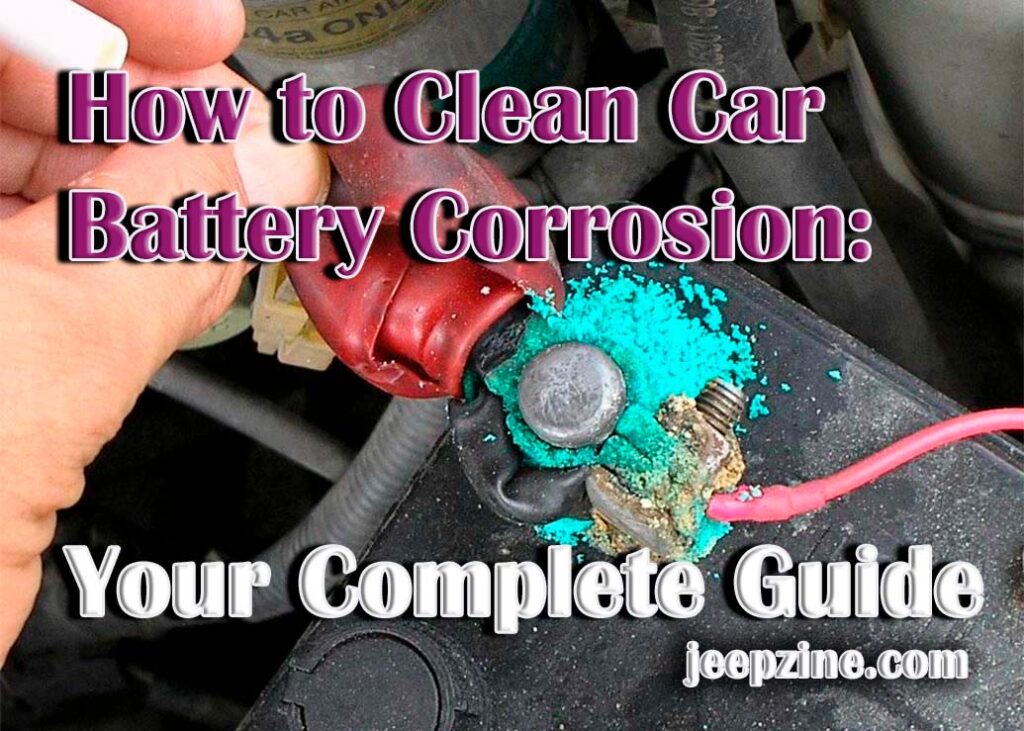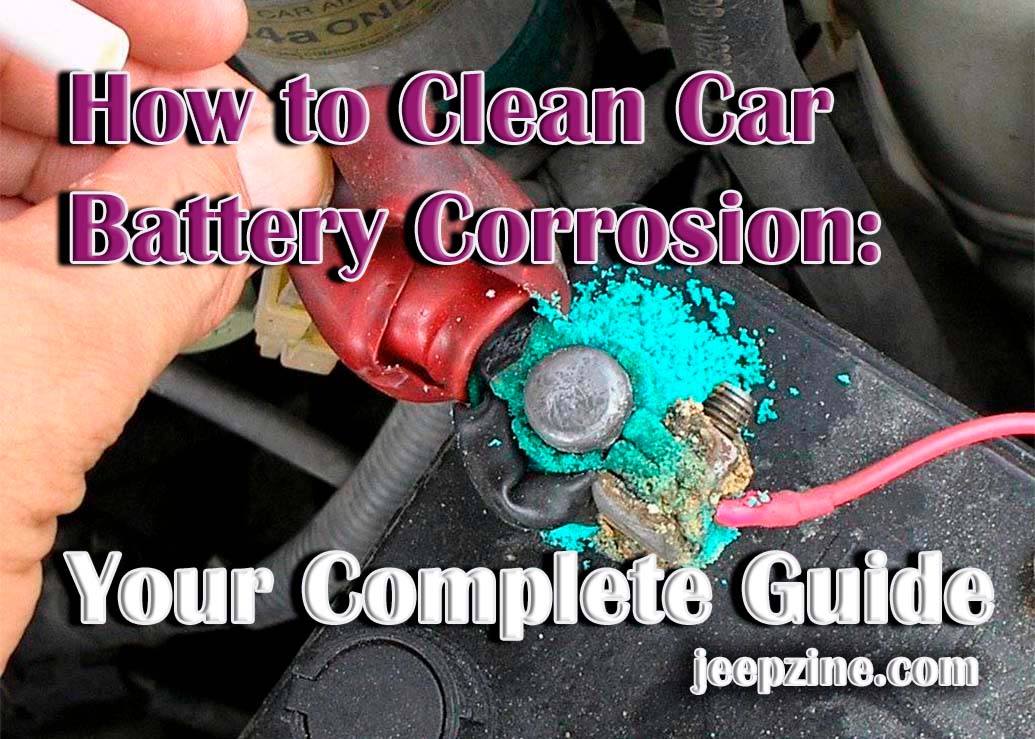
Removing Car Battery Corrosion: A Comprehensive Guide
Car battery corrosion is a common problem that can affect the performance and lifespan of your vehicle’s battery. This unsightly buildup, typically appearing as a white, blue, or greenish substance around the battery terminals, is caused by a chemical reaction between the battery acid and the metal components. If left unattended, car battery corrosion can lead to starting problems, reduced battery life, and even damage to other electrical components. This guide provides a comprehensive overview of removing car battery corrosion safely and effectively, ensuring your vehicle remains reliable.
Understanding Car Battery Corrosion
Before diving into the cleaning process, it’s essential to understand what causes car battery corrosion. The primary culprit is hydrogen gas released from the battery acid during the charging process. This gas reacts with the metal terminals and other nearby components, forming corrosion. Overcharging, undercharging, and loose connections can exacerbate the problem. Additionally, extreme temperatures can accelerate the corrosion process.
Identifying the Signs of Corrosion
Recognizing the early signs of car battery corrosion is crucial for preventing significant damage. Common indicators include:
- Visible white, blue, or greenish buildup on the battery terminals.
- Difficulty starting the engine, especially in cold weather.
- Dim headlights or other electrical issues.
- A clicking sound when attempting to start the car.
Safety Precautions Before Removing Corrosion
Removing car battery corrosion involves working with battery acid, which is corrosive and can cause burns. Therefore, it’s vital to take necessary safety precautions:
- Wear safety glasses: Protect your eyes from potential splashes of battery acid.
- Wear gloves: Use chemical-resistant gloves to protect your hands from acid exposure.
- Work in a well-ventilated area: This helps to dissipate any fumes released during the cleaning process.
- Disconnect the battery: Always disconnect the negative terminal first, followed by the positive terminal. This prevents accidental short circuits.
- Avoid smoking or open flames: Hydrogen gas released by the battery is flammable.
Tools and Materials Needed
Gather the following tools and materials before starting the cleaning process:
- Safety glasses
- Chemical-resistant gloves
- Wrench (to disconnect battery terminals)
- Baking soda
- Water
- Old toothbrush or wire brush
- Clean rags
- Battery terminal cleaner spray (optional)
- Battery terminal protector spray (optional)
- Dielectric grease (optional)
Step-by-Step Guide to Removing Car Battery Corrosion
Follow these steps to safely and effectively remove car battery corrosion:
Disconnecting the Battery
Using a wrench, disconnect the negative (-) terminal first, followed by the positive (+) terminal. Loosen the nuts securing the terminals and carefully remove the cables. Ensure the cables are positioned away from the battery to prevent accidental contact.
Preparing the Cleaning Solution
Mix baking soda and water to create a paste. The ratio should be approximately 3 tablespoons of baking soda per cup of water. This paste will neutralize the battery acid and help dissolve the corrosion.
Applying the Cleaning Solution
Apply the baking soda paste to the corroded areas of the battery terminals and surrounding components. Ensure all visible corrosion is covered. Allow the paste to sit for 5-10 minutes to allow it to work its magic. The baking soda will fizz as it neutralizes the acid.
Scrubbing the Terminals
Using an old toothbrush or wire brush, scrub the corroded areas thoroughly. Pay close attention to the terminals, cable connectors, and any other affected surfaces. The baking soda paste should help loosen and remove the corrosion.
Rinsing with Water
After scrubbing, rinse the battery terminals and surrounding areas with clean water to remove any remaining baking soda residue. Ensure all traces of the paste are gone.
Drying the Battery
Use clean rags to thoroughly dry the battery terminals, cable connectors, and surrounding areas. Moisture can promote further corrosion, so it’s essential to ensure everything is completely dry.
Cleaning the Battery Terminals and Connectors
Inspect the battery terminals and connectors for any remaining corrosion. If necessary, use a battery terminal cleaner spray to remove any stubborn deposits. Follow the manufacturer’s instructions for the cleaner. A wire brush specifically designed for cleaning battery terminals can also be helpful. Clean the inside of the cable connectors as well to ensure good contact.
Reconnecting the Battery
Once everything is clean and dry, reconnect the battery terminals. Attach the positive (+) terminal first, followed by the negative (-) terminal. Tighten the nuts securely, but avoid over-tightening, which can damage the terminals.
Applying Battery Terminal Protector (Optional)
To prevent future corrosion, consider applying a battery terminal protector spray or dielectric grease to the terminals. These products create a barrier against moisture and other corrosive elements.
Preventing Future Car Battery Corrosion
Preventing car battery corrosion is crucial for maintaining the health and longevity of your battery. Here are some tips to help prevent corrosion:
- Regularly inspect your battery terminals: Check for signs of corrosion at least every few months.
- Keep the battery terminals clean: If you notice any buildup, clean it promptly using the methods described above.
- Ensure proper ventilation: Make sure the battery compartment is adequately ventilated to prevent the buildup of hydrogen gas.
- Avoid overcharging or undercharging: Use a battery charger with automatic shut-off to prevent overcharging. If you frequently drive short distances, consider using a battery maintainer to prevent undercharging.
- Use battery terminal protectors: Apply battery terminal protector spray or dielectric grease to the terminals to create a protective barrier.
- Tighten loose connections: Ensure the battery terminals and cable connectors are securely tightened to prevent arcing and corrosion.
Troubleshooting Common Issues
Even after cleaning, some issues may persist. Here are some common troubleshooting steps:
- Starting Problems: If your car still struggles to start after cleaning the terminals, the battery may be weak or damaged. Consider having the battery tested and replaced if necessary.
- Electrical Issues: If you continue to experience electrical problems, such as dim headlights, check the battery cables and connections for damage or corrosion. Replace any damaged components.
- Recurring Corrosion: If corrosion reappears quickly after cleaning, there may be an underlying issue, such as a faulty battery or charging system. Consult a qualified mechanic for diagnosis and repair.
When to Seek Professional Help
While removing car battery corrosion is a relatively simple task, there are situations where seeking professional help is recommended:
- Severe Corrosion: If the corrosion is extensive and difficult to remove, it’s best to consult a mechanic.
- Battery Damage: If the battery casing is cracked or leaking, do not attempt to clean it. Replace the battery immediately.
- Electrical System Issues: If you’re not comfortable working with electrical systems, or if you suspect a more complex electrical problem, consult a qualified mechanic.
Removing car battery corrosion is an essential maintenance task that can improve your vehicle’s performance and extend the life of your battery. By following the steps outlined in this guide and taking necessary safety precautions, you can effectively remove corrosion and prevent future buildup. Regular maintenance and prompt attention to any signs of corrosion will ensure your vehicle remains reliable and trouble-free. Remember, a clean battery connection is a happy battery connection!
Ignoring car battery corrosion can lead to more serious problems down the road. Don’t wait until your car won’t start. Take the time to inspect and clean your battery terminals regularly. Your vehicle will thank you for it. By taking a proactive approach, you can prevent costly repairs and ensure your car is always ready to go. Removing car battery corrosion is a small investment of time that can save you significant headaches in the long run.
[See also: How to Test a Car Battery]
[See also: Choosing the Right Car Battery]

